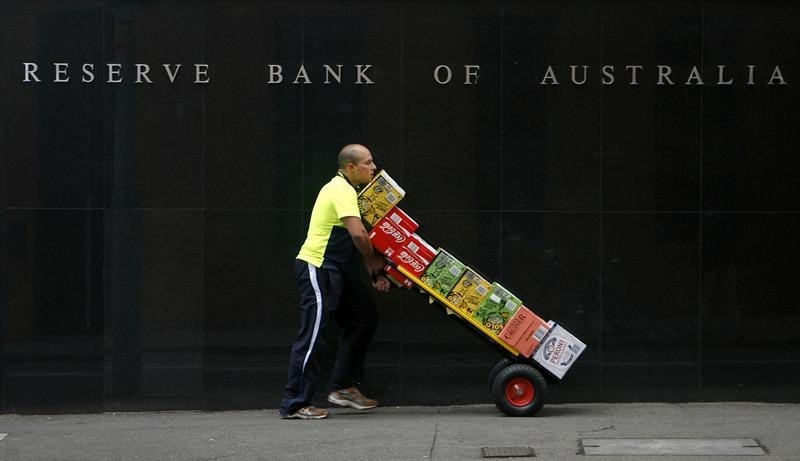By Ambar Warrick
Investing.com-- The Reserve Bank of Australia (RBA) raised its benchmark rate as expected on Tuesday, and signaled that future rate hikes will depend largely on the path of inflation and economic growth as it seeks to keep the economy on “an even keel.”
The RBA raised its cash rate target by 25 basis points to 3.10%, meeting market expectations. The Australian dollar reacted positively to the move, rising 0.5% to 0.6733 against the dollar.
Tuesday’s hike, which is the RBA’s last meeting for the year, marks a cumulative raise of 300 basis points in 2022, as the central bank moved to combat rising inflation.
But the bank now expects inflation to rise even further in the near-term, while economic growth is likely to slow. Consumer inflation, which grew at an annualized rate of 6.9% in November, is forecast to end the year at around 8%.
The RBA had slowed its pace of rate hikes in recent months, as it struggled to strike a balance between combating inflation and preventing economic destruction.
The central bank’s main priority is to “re-establish low inflation and return inflation to the 2-3% range over time,” Governor Philip Lowe said in a prepared statement. He added that the RBA’s forecast is for CPI inflation to trend slightly above 3% by 2024.
Recent data suggests that a post-COVID boom in the Australian economy now appears to have cooled. The country logged an unexpected current account deficit in the September quarter, with a drop in export values and slowing government spending likely to have weakened the country’s gross domestic product during the quarter.
The RBA forecast annual growth of around 1.5% in 2023 and 2024.
Data due on Wednesday is expected to show that Australian economic growth cooled to a quarterly growth rate of 0.7% in the September quarter from 0.9% in the prior quarter. But the current account deficit could herald an even bigger decline.
An economic slowdown in China, Australia’s biggest trading partner, has weighed heavily on its economy, as mainland demand for commodity exports cooled.
Still, consumer spending has remained robust in the country this year, helped largely by a tight labor market. This has given the central bank enough headroom to keep raising rates, and is likely to continue propping up the economy in the near-term.
